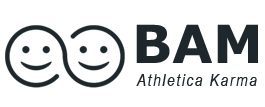Preventing Achilles Injuries through Calf Stretching: A Lesson from Super Bowl LVIII
Super Bowl LVIII pivotal moment that shocked 49er fans, was the moment when Dre Greenlaw, the star linebacker for the San Francisco 49ers, made his run onto the field and immediately collapsed holding his calf.
It’s believed Dre Greenlaw suffered a torn Achilles. This unfortunate incident is not new and very common among athletes that play at any level, whether professional NFL, NBA, or European football, to high-school and recreation league sports team. Dre’s torn achilles brought to light to millions of NFL fans the importance of calf stretching and the role it plays in preventing such injuries.
While the exact cause of Dre’s injury is unknown still, it serves as a stark reminder of the importance of preventative measures, particularly in the area of calf stretching and strengthening.
Calf stretching exercises are essential for everyone of all ages, especially those who earn a career in sports. Professional athletes across all sports, including NFL, NBA, NHL, MLS, European football to casual joggers and marathon runners are all to familiar of the debilitating injury that a torn Achilles tendon or Achilles tendonitis can have on ending a career, or best yet a disruptive lifestyle for a few months to recover. Calf stretching exercises, whether performed in the gym, at home or in the office, not only help reduce the risk of Achilles-related injuries but also contribute to improved calf strength, flexibility, and balance.
A popular method professional athletes use to aid in calf-related exercises is the use of wooden slant board or calf wedge. These calf stretching tools can be found not only in gyms, but also in physiotherapy clinics to support patient rehab from calf and leg related injuries. Athletes will often use either a professional wood slant board or similar inclined surface to intensify their calf exercises and attain a deep stretch in the calf muscles, thereby increasing flexibility and strength.
The use of a slant board or calf wedge is particularly beneficial for those who regularly engage in high-impact activities, as it helps to prepare the muscles for the strain they will endure.
Benefit of calf stretching: The benefits of calf stretching exercises are multi-purpose. Calf stretching using an adjustable slantboard not only helps prevent injuries like a torn Achilles or Achilles tendonitis (and plantar fasciitis) but also contribute to overall athletic performance. Improved calf strength can lead to better balance and stability, while increased flexibility can enhance an athlete’s range of motion.
There are several popular calf stretching exercises that utilize a slant board.
1. Achilles Exercise: Slant Board Calf Stretch
- Stand on the slant board, ensuring your feet are hip-width apart.
- Keep your back straight and your hands on your hips for balance.
- Slowly lean forward, keeping your knees straight. You should feel a stretch in your calves.
- Hold this position for 15-30 seconds. Remember to breathe normally during the stretch.
- Relax and return to the starting position.
Repeat this exercise 3-5 times. As your flexibility improves, you can increase the duration of the stretch.
To build greater strength, and proceed with what’s most comfortable for you, try the slant board for calf stretching using a resistance band or a comfortable dumbbell weights in each hand. For an alternative approach, try a T-bar with light weights on each side comfortable resting on your shoulders.
Thinking of picking up a slant board for your workouts or home?
Visit Amazon.com for BAM’s 5-in-1 slant board for calf stretching solution for athletes and all ages.
2. Slant Board Achilles Stretch
- Stand with one foot on the slant board and the other foot flat on the ground behind you.
- Keeping both heels on the ground, lean into the slant board until you feel a stretch in the Achilles tendon of the back leg.
- Hold for 15-30 seconds, then switch legs.
- Repeat this exercise 3-5 times on each leg. As your flexibility improves, you can increase the duration of the stretch.
Check out these 9 squat exercises using a slant board to burn fat and build flexibility, or physio rehab exercises to help treat plantar fasciitis relief and achilles tendonitis.
- Achilles tendonitis: Causes, symptoms, and 5 exercises to prevent Achilles tendonitis
- How do you use an Achilles stretcher for Achilles tendonitis
- Help recover from Achilles tendonitis, plantar fasciitis and calf strains
Remember, consistency is key in seeing results from these exercises. It’s recommended to perform these stretches regularly as part of your workout routine. Even if you’re not in the gym, using a slant board for calf stretching is a phenominal exercise to perform at home. If you have a slant board, keep one in the bedroom and perform a few calf stretches in the morning. Then another in the your living or TV room for casual stretches throughout the day.
Slant boards offer a versatility to perform a number of different full body exercises beyond the traditional calf stretch. For example, squats, forward lunge, one-leg dip, yoga postures, and simple ankle and calf stretches.
Always ensure you’re performing these calf stretching exercises with correct form to prevent injury and maximize effectiveness. If you feel any pain during these exercises, stop immediately and consult with a healthcare professional.
The unfortunate injury of Dre Greenlaw in Super Bowl LVIII serves as a reminder of the importance of preventative measures in all sports and activities. Incorporating calf stretching exercises into workout routines, especially with the aid of tools like a slant board or calf wedge, can significantly reduce the risk of Achilles-related injuries and contribute to improved athletic performance.
As the saying goes, “An ounce of prevention is worth a pound of cure.” Let’s take this lesson to heart and prioritize our health and well-being in our athletic pursuits.







